The follow-up to the Xiaomi 12 Pro flagship boasts a very high-resolution main camera sensor, but what did we make of this smartphone when we tried it out for the first time?
-
200MP main cameraThe leading sensor on this phone has a very high resolution -
Snapdragon 8 Plus Gen 1 chipsetThis handset runs on Qualcomm’s latest mobile processor -
5000mAh batteryThe Xiaomi 12T Pro also has a large battery capacity
Availability
- UKRRP: £699
- USATBC
- EuropeRRP: €749
- CanadaTBC
- AustraliaTBC
Introduction
We were very impressed by the Xiaomi 12 Pro, released earlier in the year, with its camera coming in for particular praise. This updated 12T Pro model boasts updates in certain key areas, with the main camera sensor now boasting a whopping 200-megapixel resolution, the battery capacity being 5000mAh, and the processor having been bumped up to the Snapdragon 8 Plus Gen 1.
Do these key changes make for a better all-round device, or do some price-cutting compromises hold it back from greatness?
While I have not tested the device for long enough to give you our final verdict, here is my first impressions from trying out the device ahead of the launch.
Design and Screen
- Similar look to the Xiaomi 12 Pro
- No IP rating
- Great screen
The Xiaomi 12T Pro is evidently a continuity candidate for succeeding the Xiaomi 12 Pro, as it looks very similar.
This is a good thing in my book, as I was very impressed with the design of its predecessor; however, I feel that the rear panel on this one doesn’t quite have that same pleasingly tactile feel which endeared me to the 12 Pro, and the new version has a flat screen rather than a curved one, with noticeable bezels around the edge.
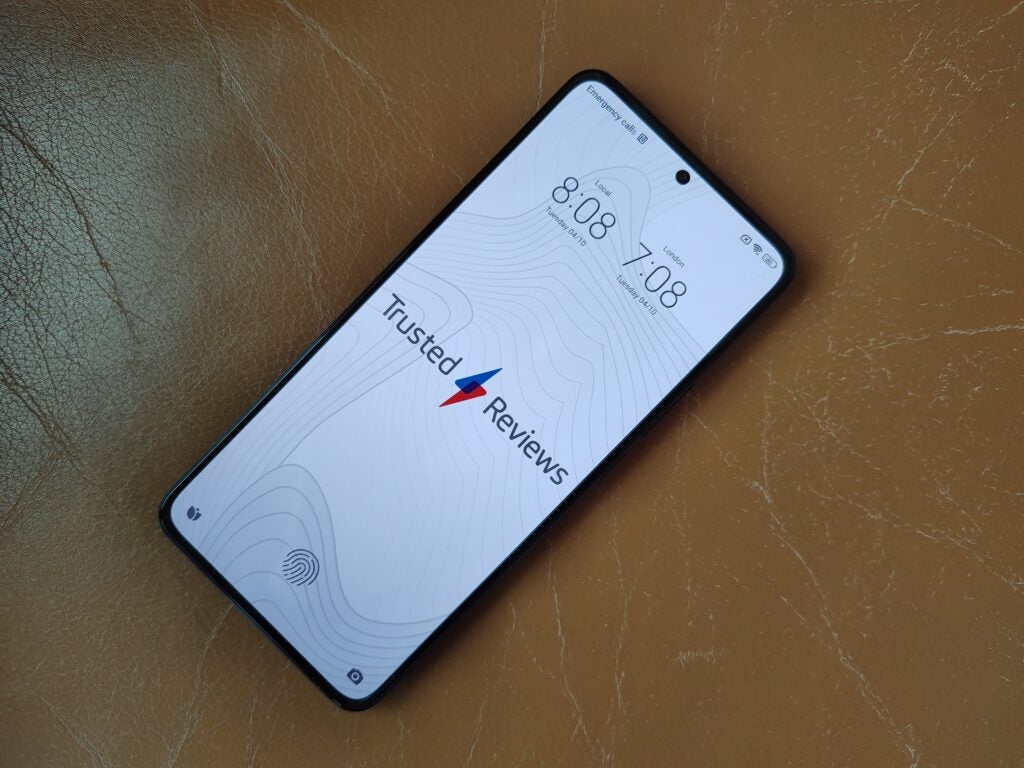
While the Xiaomi 12 Pro has Gorilla Glass Victus on the front, this one has Gorilla Glass 5, so you might not get the same level of resistance, and it similarly lacks an IP rating, so we can’t be sure of how it may react to exposure to water or dust.
While I felt that the large 6.67-inch screen was manageable to use with one hand, I did however find the 12T Pro to be noticeably thick, at 8.6mm (though despite this thickness, in keeping with most modern flagships, it still can’t find room for a 3.5mm headphone jack.
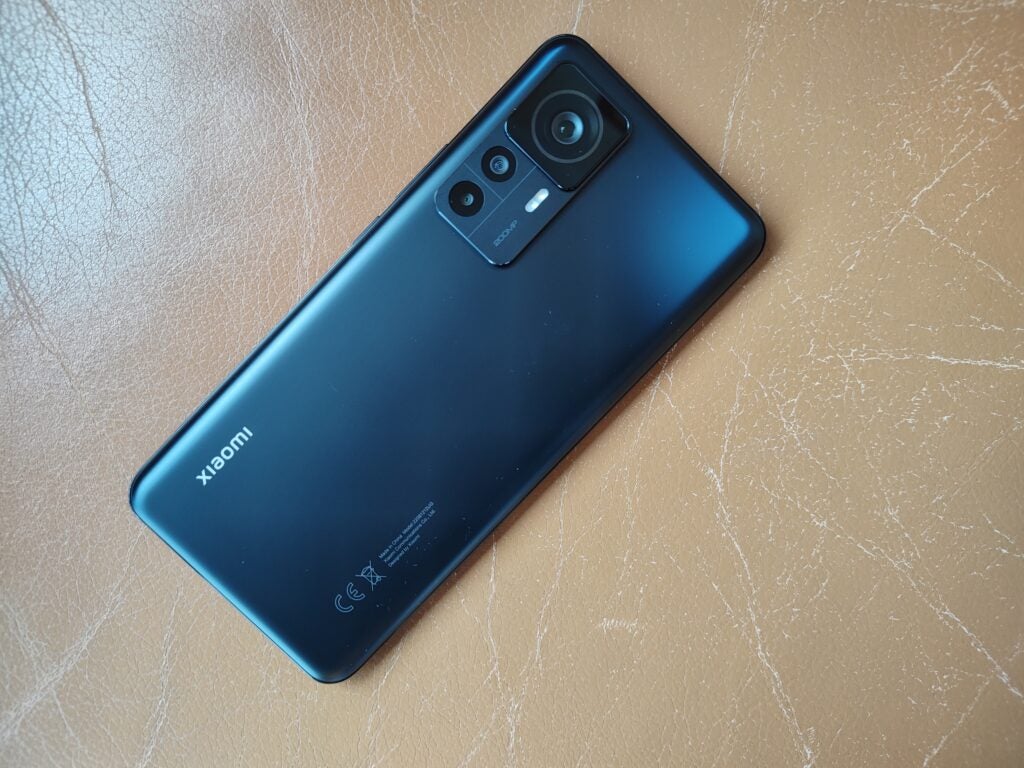
The screen is highly accomplished, and ranks as one of the Xiaomi 12T Pro’s best features. This AMOLED panel boasts excellent contrast with over 68 billion colours and HDR10+, and it’s got a sharp 1220x27127p resolution that does justice to content. What’s more, if you’re watching playback that supports HDR10+ then you’ll notice even more enhanced, bursting colours.
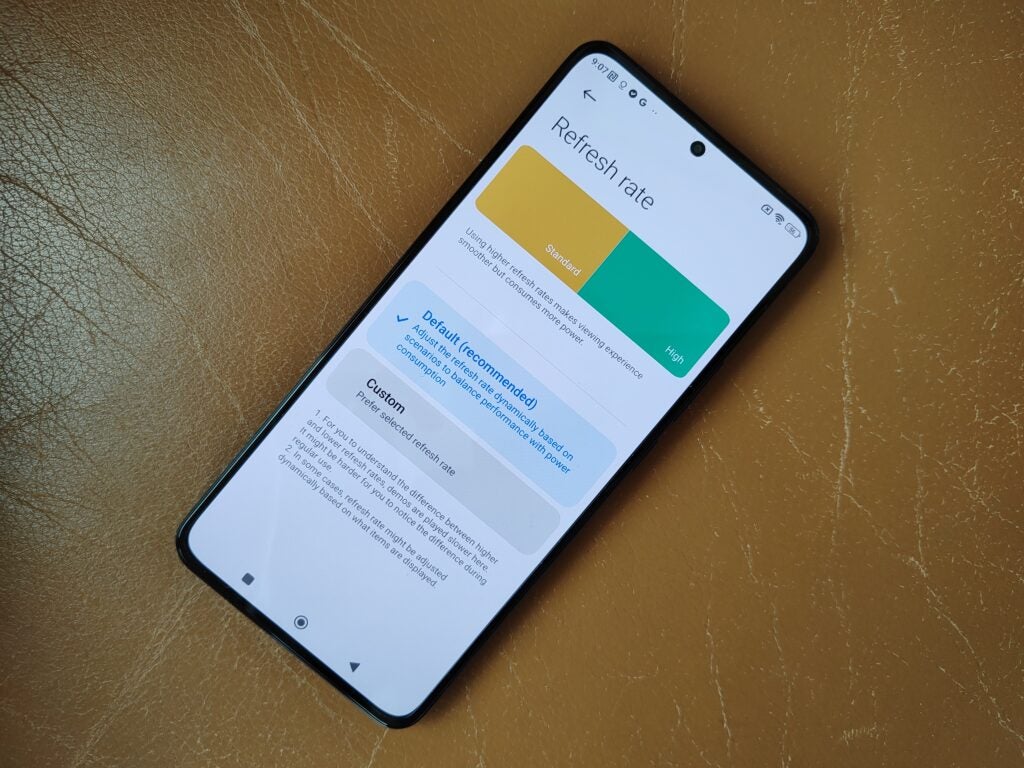
The 12T Pro’s screen is also very smooth, with a maximum 120Hz refresh so that the likes of social media feeds run very slickly when you’re scrolling through. Crucially it’s an adaptive refresh rate that can switch from 30Hz to 60Hz to 90Hz to the maximum, so if you’re undertaking activities that can’t support the top rate then the phone can save some battery life instead, without you having to adjust the settings manually.
Overall I found the design to be good, though slightly less premium than that of the Xiaomi 12 Pro, but the screen is similarly impressive, being sharp, smooth, and popping with vivid colours.
Camera
- 200-megapixel main sensor
- 8-megapixel ultrawide and 2-megapixel macro sensor
- Very promising early results
Arguably the headline feature of this new device is the incredibly high resolution of its main camera, which clocks in at 200-megapixels.
However, the bigger picture (so to speak) isn’t necessarily one of a clear upgrade on its predecessor; the Xiaomi 12 Pro offered excellent versatility across three lenses, each one having a strong 50-megapixel resolution, whereas the approach with this device has clearly been to frontload the main sensor perhaps at the expense of the others, since it’s accompanied by an 8-megapixel ultrawide sensor and a 20-megapixel macro snapper.
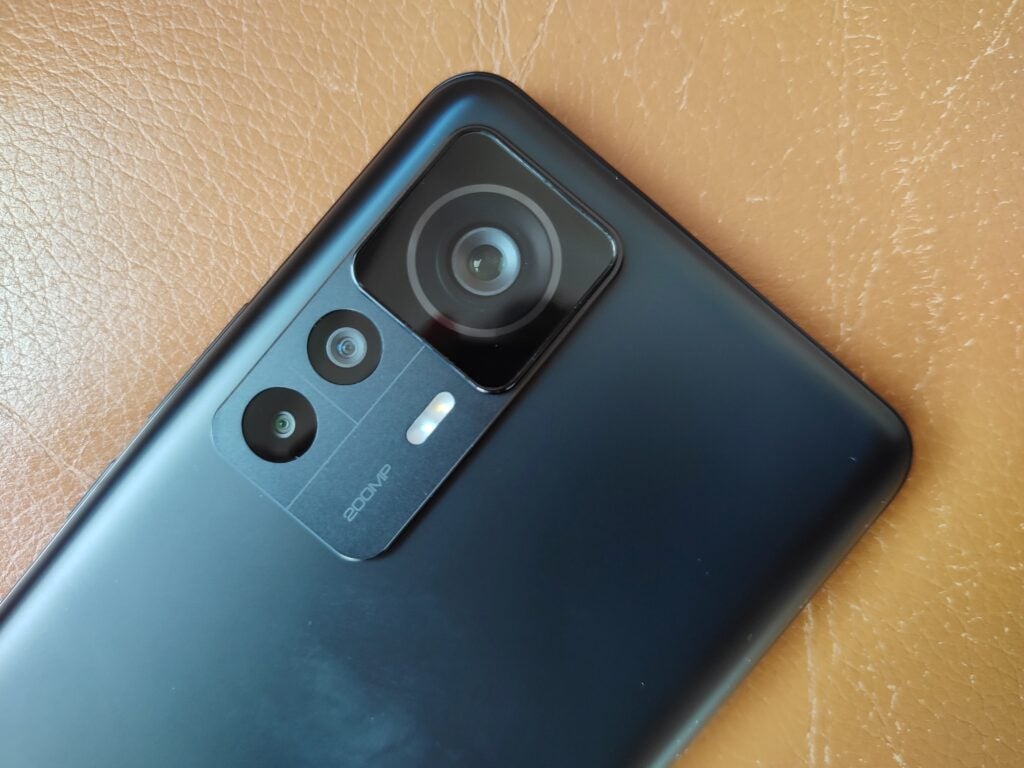
There’s plenty to dig into with that main sensor, which measures 1/1.22-inches. It features 2x in-sensor zoom which is primarily intended for taking strong portrait shots, it can take 8K resolution video (at 24fps), and there are a few software optimisations too.
For instance, Xiaomi claims to have particularly worked on lowlight image capture and shooting fast-moving objects, though we’ve not yet had the opportunity to test these, and there are also features such as Xiaomi ProCut which aims to help you intelligently crop your photos.

Though I have not yet had a lot of time to really test out the camera, my initial impressions of that 200-megapixel main sensor are positive, with it seeming to spit out images that are highly detailed and have pleasantly balanced lighting; take at the shot above for a quick preview of its capabilities. However, we’ll need to truly put it through its paces to see how it holds up against the best camera phones.
Performance
- Flagship Snapdragon 8 Plus Gen 1 chipset
- MIUI 13 user interface
The Xiaomi 12T Pro runs on Qualcomm’s latest and greatest mobile processor, namely the Snapdragon 8 Plus Gen 1.
We’ve been highly impressed by this bit of silicon when we’ve come across it previously, in the likes of the Asus ROG Phone 6 Pro, and OnePlus 10T. The 12T Pro has posted some promising benchmarking results; according to Geekbench 5, it registered 1305 for the single core performance and 4219 for multi-core performance, indicating that it has an extremely capable CPU on board which should be able to deal with pretty much anything you throw at it.
In the UK, only one variant of the device will be sold, with 8GB of RAM and 256GB of storage.
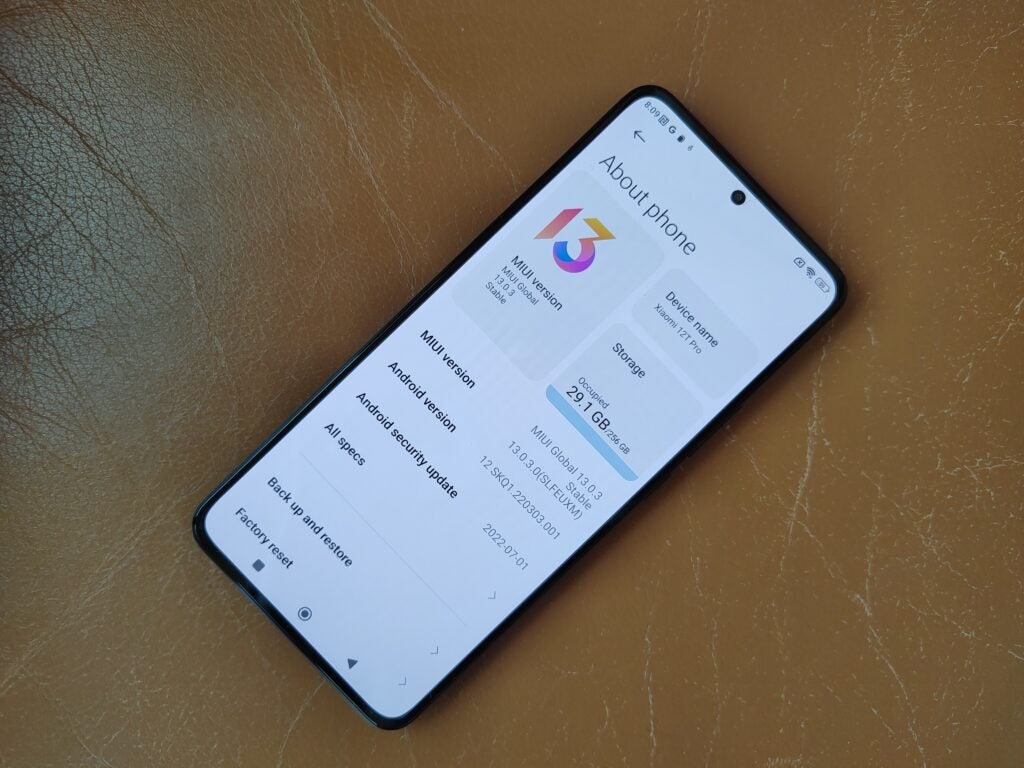
The software on board the Xiaomi 12T Pro is MIUI 13, which is built upon Android 12. I have to confess that I’m not really the biggest fan of this software, as there’s quite a chunk of bloatware installed upon start-up.
Plenty of apps that I have no interest in are already downloaded on the device, which I do find a bit of a pain (I didn’t choose to download any of the apps displayed below on the home screen). However, I was at least relatively impressed to receive a notification pop-up that informed me that image metadata and locations would be turned off by default when sharing a picture, which indicates that some attention has been paid to users’ privacy.
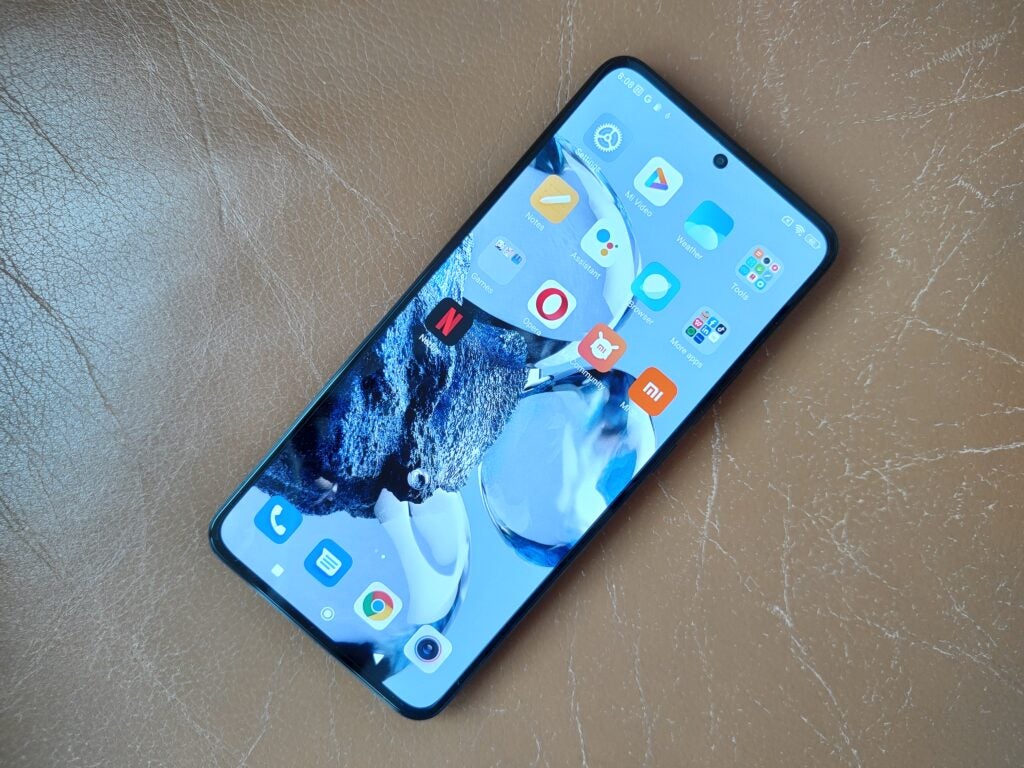
Battery Life
- 5000mAh capacity
- 120W fast-charging
The battery capacity here is highly encouraging, weighing in at 5000mAh. That’s a beefy size, and usually Android phones deliver a good day of battery life with such a cell onboard though of course that’s no guarantee, and we’ll have to use this device as our daily driver for a few days before being able to tell you how it actually performs in practice. It’s noteworthy for at least being larger than the one on the Xiaomi 12 Pro, which was 4600mAh.
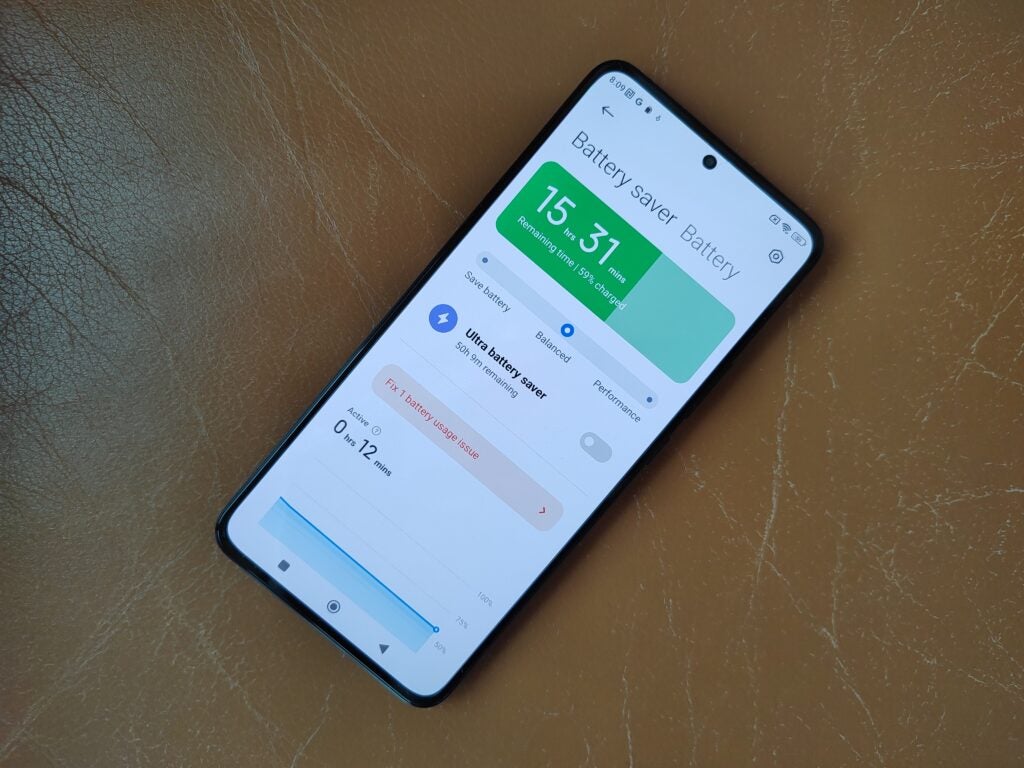
This phone’s charging prowess is at least as impressive as the battery capacity. With a 120W rating, Xiaomi claims that the phone can go from 0% battery to 100% battery in just 19 minutes, which is an astonishing rate that would leave the likes of the iPhone 13 and the Samsung Galaxy S22 series far in the shade. This feature is a great boost when you need to quickly juice up your phone before heading out, particularly if you’ve forgotten to charge it overnight. However, the flipside of this benefit is that the Xiaomi 12T Pro does not support wireless charging.
Early Impressions
Ultimately, with only a limited amount of time on our hands with this phone, it’s far too early to be able to give a definitive verdict on its capabilities.
Nonetheless, there are already a few aspects that jump out; the processor is likely to deliver very strong performance standards based on its peers, the 200-megapixel main camera looks promising and the screen is alluringly attractive too, thanks to its smoothness and richness. What’s more, the price seems eminently reasonable for a phone with such specs.
However, there are still a few potential drawbacks; for one thing, the secondary cameras could potentially be a step-down from the main shooter, though we’ve not yet had enough time to establish that as a fact just yet. Additionally, the design does feel noticeably less premium than that of its older brother, the Xiaomi 12 Pro. However, for the time being we’re feeling rather optimistic about the potential of this new premium smartphone.
FAQs
Yes, it offers 5G connectivity as long as you’ve got a compatible SIM card and network coverage
The Xiaomi 12T is available in Black (as pictured), Silver, and Blue
Jargon buster
IP rating
An abbreviation for ‘Ingress Protection Code’, which lets you know to what extent a device might be waterproof or dustproof.
The follow-up to the Xiaomi 12 Pro flagship boasts a very high-resolution main camera sensor, but what did we make of this smartphone when we tried it out for the first time?
-
200MP main cameraThe leading sensor on this phone has a very high resolution -
Snapdragon 8 Plus Gen 1 chipsetThis handset runs on Qualcomm’s latest mobile processor -
5000mAh batteryThe Xiaomi 12T Pro also has a large battery capacity
Availability
- UKRRP: £699
- USATBC
- EuropeRRP: €749
- CanadaTBC
- AustraliaTBC
Introduction
We were very impressed by the Xiaomi 12 Pro, released earlier in the year, with its camera coming in for particular praise. This updated 12T Pro model boasts updates in certain key areas, with the main camera sensor now boasting a whopping 200-megapixel resolution, the battery capacity being 5000mAh, and the processor having been bumped up to the Snapdragon 8 Plus Gen 1.
Do these key changes make for a better all-round device, or do some price-cutting compromises hold it back from greatness?
While I have not tested the device for long enough to give you our final verdict, here is my first impressions from trying out the device ahead of the launch.
Design and Screen
- Similar look to the Xiaomi 12 Pro
- No IP rating
- Great screen
The Xiaomi 12T Pro is evidently a continuity candidate for succeeding the Xiaomi 12 Pro, as it looks very similar.
This is a good thing in my book, as I was very impressed with the design of its predecessor; however, I feel that the rear panel on this one doesn’t quite have that same pleasingly tactile feel which endeared me to the 12 Pro, and the new version has a flat screen rather than a curved one, with noticeable bezels around the edge.

While the Xiaomi 12 Pro has Gorilla Glass Victus on the front, this one has Gorilla Glass 5, so you might not get the same level of resistance, and it similarly lacks an IP rating, so we can’t be sure of how it may react to exposure to water or dust.
While I felt that the large 6.67-inch screen was manageable to use with one hand, I did however find the 12T Pro to be noticeably thick, at 8.6mm (though despite this thickness, in keeping with most modern flagships, it still can’t find room for a 3.5mm headphone jack.

The screen is highly accomplished, and ranks as one of the Xiaomi 12T Pro’s best features. This AMOLED panel boasts excellent contrast with over 68 billion colours and HDR10+, and it’s got a sharp 1220x27127p resolution that does justice to content. What’s more, if you’re watching playback that supports HDR10+ then you’ll notice even more enhanced, bursting colours.

The 12T Pro’s screen is also very smooth, with a maximum 120Hz refresh so that the likes of social media feeds run very slickly when you’re scrolling through. Crucially it’s an adaptive refresh rate that can switch from 30Hz to 60Hz to 90Hz to the maximum, so if you’re undertaking activities that can’t support the top rate then the phone can save some battery life instead, without you having to adjust the settings manually.
Overall I found the design to be good, though slightly less premium than that of the Xiaomi 12 Pro, but the screen is similarly impressive, being sharp, smooth, and popping with vivid colours.
Camera
- 200-megapixel main sensor
- 8-megapixel ultrawide and 2-megapixel macro sensor
- Very promising early results
Arguably the headline feature of this new device is the incredibly high resolution of its main camera, which clocks in at 200-megapixels.
However, the bigger picture (so to speak) isn’t necessarily one of a clear upgrade on its predecessor; the Xiaomi 12 Pro offered excellent versatility across three lenses, each one having a strong 50-megapixel resolution, whereas the approach with this device has clearly been to frontload the main sensor perhaps at the expense of the others, since it’s accompanied by an 8-megapixel ultrawide sensor and a 20-megapixel macro snapper.

There’s plenty to dig into with that main sensor, which measures 1/1.22-inches. It features 2x in-sensor zoom which is primarily intended for taking strong portrait shots, it can take 8K resolution video (at 24fps), and there are a few software optimisations too.
For instance, Xiaomi claims to have particularly worked on lowlight image capture and shooting fast-moving objects, though we’ve not yet had the opportunity to test these, and there are also features such as Xiaomi ProCut which aims to help you intelligently crop your photos.

Though I have not yet had a lot of time to really test out the camera, my initial impressions of that 200-megapixel main sensor are positive, with it seeming to spit out images that are highly detailed and have pleasantly balanced lighting; take at the shot above for a quick preview of its capabilities. However, we’ll need to truly put it through its paces to see how it holds up against the best camera phones.
Performance
- Flagship Snapdragon 8 Plus Gen 1 chipset
- MIUI 13 user interface
The Xiaomi 12T Pro runs on Qualcomm’s latest and greatest mobile processor, namely the Snapdragon 8 Plus Gen 1.
We’ve been highly impressed by this bit of silicon when we’ve come across it previously, in the likes of the Asus ROG Phone 6 Pro, and OnePlus 10T. The 12T Pro has posted some promising benchmarking results; according to Geekbench 5, it registered 1305 for the single core performance and 4219 for multi-core performance, indicating that it has an extremely capable CPU on board which should be able to deal with pretty much anything you throw at it.
In the UK, only one variant of the device will be sold, with 8GB of RAM and 256GB of storage.

The software on board the Xiaomi 12T Pro is MIUI 13, which is built upon Android 12. I have to confess that I’m not really the biggest fan of this software, as there’s quite a chunk of bloatware installed upon start-up.
Plenty of apps that I have no interest in are already downloaded on the device, which I do find a bit of a pain (I didn’t choose to download any of the apps displayed below on the home screen). However, I was at least relatively impressed to receive a notification pop-up that informed me that image metadata and locations would be turned off by default when sharing a picture, which indicates that some attention has been paid to users’ privacy.

Battery Life
- 5000mAh capacity
- 120W fast-charging
The battery capacity here is highly encouraging, weighing in at 5000mAh. That’s a beefy size, and usually Android phones deliver a good day of battery life with such a cell onboard though of course that’s no guarantee, and we’ll have to use this device as our daily driver for a few days before being able to tell you how it actually performs in practice. It’s noteworthy for at least being larger than the one on the Xiaomi 12 Pro, which was 4600mAh.

This phone’s charging prowess is at least as impressive as the battery capacity. With a 120W rating, Xiaomi claims that the phone can go from 0% battery to 100% battery in just 19 minutes, which is an astonishing rate that would leave the likes of the iPhone 13 and the Samsung Galaxy S22 series far in the shade. This feature is a great boost when you need to quickly juice up your phone before heading out, particularly if you’ve forgotten to charge it overnight. However, the flipside of this benefit is that the Xiaomi 12T Pro does not support wireless charging.
Early Impressions
Ultimately, with only a limited amount of time on our hands with this phone, it’s far too early to be able to give a definitive verdict on its capabilities.
Nonetheless, there are already a few aspects that jump out; the processor is likely to deliver very strong performance standards based on its peers, the 200-megapixel main camera looks promising and the screen is alluringly attractive too, thanks to its smoothness and richness. What’s more, the price seems eminently reasonable for a phone with such specs.
However, there are still a few potential drawbacks; for one thing, the secondary cameras could potentially be a step-down from the main shooter, though we’ve not yet had enough time to establish that as a fact just yet. Additionally, the design does feel noticeably less premium than that of its older brother, the Xiaomi 12 Pro. However, for the time being we’re feeling rather optimistic about the potential of this new premium smartphone.
FAQs
Yes, it offers 5G connectivity as long as you’ve got a compatible SIM card and network coverage
The Xiaomi 12T is available in Black (as pictured), Silver, and Blue
Jargon buster
IP rating
An abbreviation for ‘Ingress Protection Code’, which lets you know to what extent a device might be waterproof or dustproof.
























